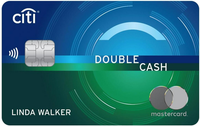Citi Custom Cash Card vs. Citi Double Cash Card

Citi is an advertising partner
(The Citi Premier® Card and Citi Prestige® Card are no longer available)
Key takeaways
- The Citi Custom Cash® Card and Citi Double Cash® Card are both no-annual-fee cash back cards with solid intro APR offers.
- The best card for you will depend on your intro APR needs as well as your ongoing appetite for strategizing with your cards to maximize your rewards. If simplicity is your goal, Double Cash is likely the better fit.
- With both cards, the best rewards value comes from combining points earned with these cards under a premium Citi credit card and transferring those points to a high-value travel partner.
Citi offers unique cash back that mimics some popular 5 percent cash back cards while offering more flexibility. Instead of offering cash back only in rotating bonus categories, the Citi Custom Cash® Card adapts to your spending habits by earning 5 percent back in whichever eligible category you spend the most in each billing cycle (on the first $500 you spend per billing cycle, then 1 percent back). The card also carries a generous welcome bonus and no annual fee.
But how does the Custom Cash Card stack up against what may be the most popular Citi rewards card of them all — the Citi Double Cash® Card? Offering an even more streamlined cash back program, the Citi Double Cash Card earns a flat 2 percent back per dollar — 1 percent when you buy and another 1 percent when you pay off your purchases.
While either card can be a lucrative addition to your wallet, one may be a better fit based on your spending habits and cash back strategy. Read on to learn how the Custom Cash Card compares to the Double Cash Card when it comes to earning rates, welcome bonuses, benefits and more.
Main details
| Card | Citi Custom Cash Card | Citi Double Cash Card |
|---|---|---|
| Welcome bonus | $200 cash back (fulfilled as 20,000 ThankYou points) after spending $1,500 in the first 6 months from account opening | $200 cash back (fulfilled as 20,000 ThankYou points) after spending $1,500 in the first 6 months from account opening |
| Rewards rate | Earn 5% back in your top eligible spending category each billing cycle (up to $500 spent, then 1% back) and 1% back on other purchases | Earn 2% back for each dollar spent (1% when a purchase is made and another 1% when it’s paid off) |
| Intro APR | 0% APR on purchases and balance transfers for 15 months, followed by a 18.24% - 28.24% (Variable) APR | 0% APR on balance transfers for 18 months, followed by a 18.24% - 28.24% (Variable) APR |
| Annual fee | $0 | $0 |
Citi Custom Cash vs. Citi Double Cash Card highlights

Citi Double Cash Card
-
The Citi Custom Cash Card rewards you with 5 percent back on the first $500 spent in your top eligible category each billing cycle, which comes out to about $1,500 each quarter, a typical spending cap for cards that earn 5 percent in changing categories. Furthermore, eligible bonus categories cover a wide range of everyday purchases, including purchases from:
- Restaurants
- Gas stations
- Grocery stores
- Select streaming services
- Select travel purchases
- Home improvement stores
- Fitness clubs
- Live entertainment
- Drugstores
But you’ll only earn 1 percent back on other purchases, and you’ll need to ensure you spend at least $500 in a specific category each billing cycle to maximize your rewards — it’s a lot to keep up with. Unless you spend heavily in one of the Custom Cash card’s eligible bonus categories, you’re unlikely to match the rewards you’d earn with a card that offers rewards at a flat rate on all purchases.
For that reason, Citi Double Cash squeaks out a win in this category since you earn an unlimited 2 percent back on each purchase you make and pay off, and you never have to worry about maxing out a specific spending category in each billing cycle. The overall simplicity of this earning rate makes it more attractive if you want a no-hassle way to earn rewards on most of your spending and bills.
That said, if you make the most of the Citi Custom Cash Card by maxing out your top eligible spending category each billing cycle, you could earn more than you would with the Citi Double Cash.
For example, if you spent $20,000 per year with each card, paid off your purchases in full and maxed out the Custom Cash card’s bonus cash back category each billing cycle, you’d end up with $400 in cash back from Citi Double Cash ($20,000 times 2 percent back) versus $440 on from Citi Custom Cash ($6,000 times 5 percent back, plus $14,000 times 1 percent back).
While the Citi Double Cash may come out on top for most cardholders thanks to its simplicity and consistency, the card that’s best for you will depend on your spending habits and how much effort you want to put into maximizing your rewards.
Tie
-
Historically, Double Cash hasn’t always featured a welcome bonus offer, meaning Custom Cash would be the winner in this category. But right now, Double Cash and Custom Cash are offering the same bonus opportunity to new cardholders: Earn $200 cash back (awarded as 20,000 ThankYou points) after you spend $1,500 in the first six months of account opening.
That’s a lengthy time frame to meet a low threshold and earn the bonus. With either card, you need to spend an average of $250 per month for your first six months.
A sign-up bonus alone shouldn’t sway you in one direction or another; rather, focus on long-term value. It’s fitting, then, that these cards are equal competitors in this head-to-head matchup.
Tie
-
Neither the Citi Custom Cash Card nor the Citi Double Cash Card charges an annual fee, and that’s common among cash back credit cards. This makes either card — or both — a solid choice if you’re looking to avoid the risk of an annual fee cutting into your rewards earnings.
Indeed, the Double Cash card offers one of the highest flat cash back rates and the Custom Cash offers one of the highest rates you can get in categories like groceries, gas and dining while paying no annual fee.
Depends on your goals
-
While the Citi Custom Cash offers the flexibility to minimize interest charges on both transferred balances and new purchases for an introductory period, the Double Cash card only carries an introductory APR on balance transfers. However, it offers a longer period for balance transfers.
The Citi Custom Cash Card offers a 0 percent intro APR on balance transfers and purchases for 15 months, followed by 18.24% - 28.24% (Variable) APR. Meanwhile, the Citi Double Cash Card offers a 0 percent intro APR on balance transfers only for 18 months, with the same 18.24% - 28.24% (Variable) APR after that (transfers must be made in the first four months to qualify).
Since the Citi Custom Cash card’s intro APR offer applies to both balance transfers and new purchases, it offers a bit more flexibility than the Double Cash, though for a shorter period of 15 months. It allows you a chance to both chip away at existing debt and finance large expenses. The card’s 5 percent balance transfer fee (minimum $5), however, makes it a more expensive option for balance transfers.
The Citi Double Cash, on the other hand, lacks an intro APR on purchases, so it won’t be of much use for financing big-ticket items. However, it carries a longer promotional period for balance transfers at 18 months, which could come in handy if you have a large balance and need as much time as possible to pay it down. The card also charges only a 3 percent intro balance transfer fee (minimum $5) on transfers completed within the first four months of account opening (5 percent with a $5 minimum after that). If your primary focus is on consolidating and paying down high-interest debt, the Double Cash is the clear winner.
Tie
-
In fact, both of these cards are losers in this category. Both Custom Cash and Double Cash charge a 3 percent foreign transaction fee, so be sure to have another no-foreign-transaction fee card on hand when you travel abroad or shop in foreign currency.
Which card earns more?
Citi Double Cash carries familiar flat-rate rewards, but the Citi Custom Cash Card offers a unique take on rotating 5 percent cash back categories, because it automatically earns cash back in whichever bonus rewards category you’ve spent the most in each month. Eligible bonus categories are restaurants, gas stations, grocery stores, select streaming services, select travel purchases, home improvement stores, fitness clubs, live entertainment and drugstores.
Both of these cards are appealing due to their practical cash back programs, but which card earns more will depend on both what you buy and how much you spend on a credit card each month. Ultimately, if you max out the Custom Cash $500 spending cap in an eligible category each billing cycle but spend less than $2,000 per month overall, you’ll come out ahead with that card.
Citi Custom Cash Card vs. Citi Double Cash Card spending example
Considering how cash back works with these two cards, the Citi Double Cash Card is the better option for people who put more than $2,000 per month on a credit card.
Let’s say you have the Citi Custom Cash Card and max out your top-earning cash back category each month with $500 in spending, and that you use your credit card for another $1,500 in spending each month. In that case, you would earn $40 in rewards each billing cycle—the exact amount you would earn spending $2,000 on the Citi Double Cash Card.
However, if you spent $2,500 on the Citi Custom Cash Card (including $500 in an eligible bonus category) each billing cycle, you would net $45 in rewards each month compared to the $50 in rewards you would earn with the Citi Double Cash Card.
Why should you get the Citi Custom Cash Card?
Along with its impressive rewards rate opportunity in practical categories like grocery store and gas purchases, there are a number of reasons to consider the Citi Custom Cash Card over the competition. The following factors should play a role in your decision:
Why should you get the Citi Double Cash Card?
The simplicity of earning cash back with the Citi Double Cash Card makes it a popular choice for rewards enthusiasts and heavy spenders who want to stick to a single cash back card. We review some other Citi Double Cash Card benefits here:
The bottom line
Both the Citi Custom Cash Card and the Citi Double Cash Card are solid cash back credit cards, but the right one for you depends on your spending and goals. Make sure to compare cash back credit cards based on how they might work for what you hope to accomplish, whether you want to maximize your rewards or you want to access an introductory APR for purchases or balance transfers.
Also, consider the prospect of picking up both of these rewards credit cards to maximize your rewards. With both the Citi Custom Cash Card and the Citi Double Cash Card in your wallet, you could max out 5 percent categories each billing cycle and then use your Citi Double Cash Card to earn 2 percent back on all other purchases.
*Information about the Chase Freedom Flex® has been collected independently by Bankrate. The card details have not been approved or reviewed by the issuer.







